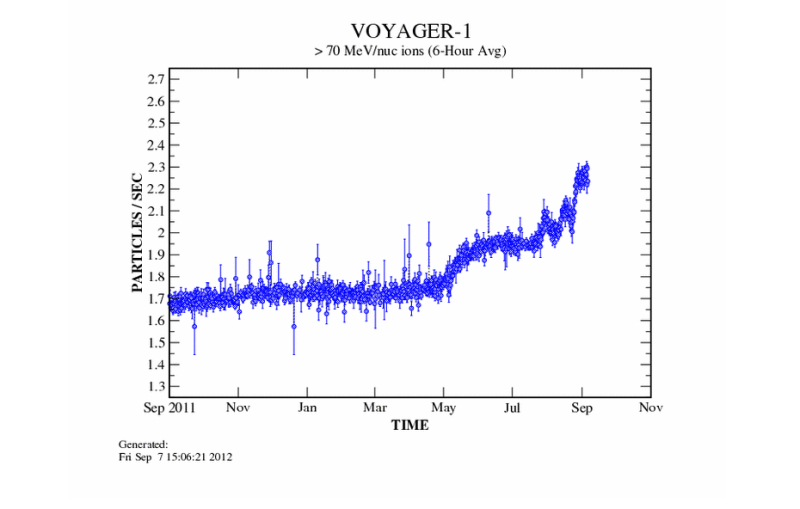
|
Credit & Copyright: Voyager Project,
NASA
Explanation:
Launched on a grand tour of the outer planets in 1977,
by good fortune the twin Voyager spacecraft were
also headed in the general direction of the
Sun's motion relative
to nearby stars.
Thirty five years later,
Voyager 1 appears to be nearing
the boundary of the Sun's heliosphere and interstellar space.
Of course the
heliosphere is the realm of the Sun
defined by the influence of the solar wind and the
Sun's magnetic field.
But how can you tell
when your spacecraft crosses the boundary into interstellar space?
One clue would be
a sudden increase in the detection of energetic cosmic rays.
The high energy particles stream through interstellar space
accelerated by distant supernovae
in our galaxy,
but are normally deflected or slowed by the heliosphere.
Covering a 12 month period (September 2011 to 2012),
this plot does show
a dramatic increase in the rate of cosmic ray particle
detection in past months by the Voyager 1 spacecraft.
Voyager 1 is
now 18 billion kilometers (17 light hours,
122 Astronomical Units) from the Sun and may soon
be the first spacecraft from Earth to enter the realm of the stars.
|
January February March April May June July August September October November December |
| ||||||||||||||||||||||||||||||||||||||||||||||||
NASA Web Site Statements, Warnings, and Disclaimers
NASA Official: Jay Norris. Specific rights apply.
A service of: LHEA at NASA / GSFC
& Michigan Tech. U.
Based on Astronomy Picture
Of the Day
Publications with keywords: spacecraft
Publications with words: spacecraft
See also:
